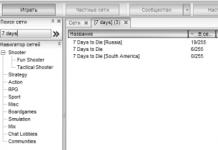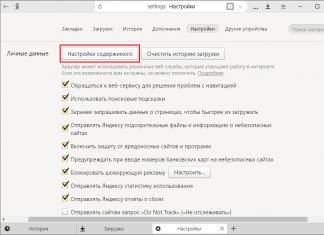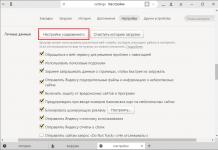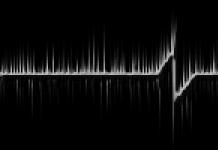Are you bothered by constant SmartScreen filter messages in Edge or Internet Explorer? There is a simple, proven way to bypass these messages.
SmartScreen is a tool of its own that aims to provide additional protection for the browser. It works in both Internet Explorer and the new Edge. The tool is very useful if you want to improve the security level of your computer. Unfortunately, it has its drawbacks - intrusive messages on how to activate the service in the browser.
Let's look at how to bypass SmartScreen messages. You should not completely disable the SmartScreen filter, as it is very useful and protects your browser from threats from the Internet. Most likely, you need to try to minimize the appearance of intrusive messages from SmartScreen
How to remove messages in browsers
Let's start by introducing changes to Windows 10 settings using the Local Group Policy Editor. You can find it using the built-in search engine of Windows 10. You can also open the Editor through the Run window (Windows + R) by typing the command gpedit.msc in it.
In the left pane of the Local Group Policy Editor window that opens, go to the following path:
"Computer Configuration > Administrative Templates > Windows Components > Internet Explorer"
— In the case of Internet Explorer
Computer Configuration > Administrative Templates > Windows Components > Microsoft Edge
— In the case of Microsoft Edge.
In both cases, after going to the browser folder, in the main part of the window, look for the item “Do not allow SmartScreen filter messages to be displayed.” If you want to disable messages completely, use the option “Do not allow SmartScreen filter messages to appear when there are unverified files.”
After selecting the desired item, double-click on it. A window will open with options for the specific command. Here you need to change the value from “Not installed” to “Enabled” and save the changes by clicking on the “Apply” and “OK” buttons. Then exit the Local Group Policy Editor window.
There is no need to restart your computer, but if Microsoft Edge or Internet Explorer was open, you will need to close it and reopen it. The changes will take effect immediately after you restart the browser. The filter message boxes will disappear from the screen. However, SmartScreen will work all the time, but only in the background, without informing us about it.
How to completely disable the SmartScreen filter
You can also use the Local Group Policy Editor to disable SmartScreen completely. This feature is available for both browsers via the above path.
In both cases - regardless of which browser we use, Edge or IE - find the “Turn off SmartScreen filter” item in the list. As in the previous case, double-click on this item, select the “Enabled” option and save the changes. Then restart your browser. The filter will now be completely turned off.
The same can be done in the browser itself. Let's start with Internet Explorer. Open IE and go to the Tools menu item. Then select Internet Options.
After opening the IE settings window, go to the Security tab and select "Other". The “Security Settings - Internet Zone” window will open. In the list that opens, find the item “Use SmartScreen filter” and set the value to “Disable”. Then save the settings and exit the browser. After restarting IE, the filter will no longer be active.
In Microsoft Edge, click on the three dots button in the upper right corner, and then go to Settings. In the window that opens, scroll down and click on “Show advanced settings.” After opening another side screen, move down and then turn off the slider on the entry “Protect me from malicious sites and downloaded files with the SmartScreen filter.” Once Edge restarts, the filter will be disabled.
Disabling a filter in Windows 8.1 or 10
As often happens after reinstalling Windows 8.1 or 10, over the next few days the user gradually installs all programs. Unfortunately, most of the time, a message appears on the screen that the downloaded application may be dangerous for your computer.
There seems to be nothing wrong with this, if not for the fact that SmartScreen connects to the Internet to verify the authenticity of applications and thus takes up a lot of the user’s time. Result? In the screen that opens, in which you can force start, you still have to wait several tens of seconds. To avoid this, you can disable the SmartScreen filter.
Go to Control Panel and then open System and Security > Action Center.
From the side menu, select Change Windows SmartScreen Filter Settings. Another window will appear in which you need to mark the options you need.
Select the last option “Do nothing (turn off Windows SmartScreen). Now the filter is disabled and a cloud will be displayed in the notification area with information that SmartScreen is not working.
.
Silence messages from a disabled SmartScreen
If turning off the filter means that it will not monitor running applications, then Windows will constantly notify us about this, and for the safety of the computer we must enable it.
SmartScreen Filter is built into the Windows 10 operating system to protect your computer by preventing potentially dangerous unidentified programs and files from running. Starting with Windows 8, SmartScreen is fully integrated into the Windows operating system; previously, the Smart Screen filter was used in the Internet Explorer browser to protect the system from threats from the Internet.
The main purpose of SmartScreen is to warn the user about the launch of unknown programs downloaded from the Internet, blocking the action. The user will see a block warning message if an unidentified file or application fails verification.
Windows SmartScreen works based on a special rating of applications, files and sites. A file downloaded to a computer is checked in a cloud database on servers. If this file is marked as unsafe, or information about the file is not in the SmartScreen filter database, downloading or execution of this file is blocked.
Information about launched files and applications is sent to the database for verification.
The SmartScreen filter in the Windows operating system performs the following functions:
- protection against malicious applications - preventing dangerous programs from being downloaded to your computer
- program reputation - displays a warning for programs with a high level of danger
- anti-phishing protection - protection against fraudulent sites
When downloading a file using the Microsoft Edge and Internet Explorer browsers, the filter checks the file when attempting to download: blocks or allows the download. A file downloaded in other browsers (Google Chrome, Mozilla Firefox, Opera, etc.) is checked by the filter when it tries to launch.
The user independently decides what to do: agree with the filter’s opinion by clicking on the “Do not execute” button, or click on the “Run in any case” button to run the file.
The SmartScreen filter can be turned off during the installation of Windows 10, or at any other time while the operating system is running.
Setting up SmartScreen
The easiest way to enter the SmartScreen filter settings in Windows 10 is to enter the expression “smartscreen” in the “Search in Windows 10” field. In Settings, select Change SmartScreen Settings.
In the Security and Maintenance window, click on Change Windows SmartScreen settings.

In the Windows SmartScreen window, you can change the filter settings. The following functions can be changed:
- Request administrator approval before launching an unidentified application from the Internet (recommended)
- Warn before running an unidentified application, but do not require administrator approval
- do nothing (turn off Windows SmartScreen)
By default, before launching an unidentified application, a window will open for the computer administrator to approve the action, with a message stating that the filter prevented the launch of the unidentified application.
Another option is less restrictive: you'll see a warning before running an unknown application, but the application won't require administrator approval to run.

How to disable SmartScreen
In the SmartScreen settings, you can disable the filter in the Windows 10 operating system. To do this, activate the “Do nothing (disable Windows SmartScreen)” option, and then click on the “OK” button.

In the General section, under the Enable SmartScreen filter to inspect web content (URLs) that Windows Store apps can use settings, switch the switch to Off.

After this, Windows SmartScreen will be completely disabled in Windows 10. If necessary, you can enable the filter on your computer again.
Conclusions of the article
SmartScreen Filter protects your computer by warning you when unidentified files and applications are running. The user can independently configure the operation of the filter, or completely disable Windows SmartScreen on his computer.
Before the release of Windows 10 Creators Update, disabling the SmartScreen filter was done through the Control Panel in the Security section. But Windows 10 1703 brought with it a new Windows Security Center, where SmartScreen control settings moved. This item has been removed from the control panel itself. This guide will provide instructions and tips on how to disable SmartScreen Filter in Windows 10.
What is SmartScreen Filter
SmartScreen is a technology that originally appeared in Internet Explorer to prevent malicious code from being executed through websites or web applications. SmartScreen was integrated into Internet Explorer 8 as a successor to the phishing filter in Internet Explorer 7. With the advent of Windows 8, SmartScreen was integrated into the operating system itself and applications from the Windows Store.
When the filter is enabled, the operating system sends information about each downloaded and launched application to Microsoft servers, where it is analyzed and compared with the existing malware database. If Windows receives a negative response to a request from the server, the system blocks the execution of the application or the opening of the file.
In Windows 10 Creators Update, SmartScreen affects classic desktop apps, the Edge browser, and apps from the Windows Store.
How to disable SmartScreen
SmartScreen sometimes conflicts with lesser-known applications or files, so you may need to disable this filter. We advise you to do this only if you are confident in the reliability of the software you are running.
Note: All actions must be performed from an account with administrator rights.
How to disable SmartScreen in Microsoft Edge
The instructions above allow you to turn off the filter in all areas that are affected by it. Optionally, you can disable SmartScreen only for Microsoft Edge in the settings of the browser itself. You can turn off the browser filter in cases where Edge does not allow you to complete downloading a file, but you really want to download it. In this case, SmartScreen is disabled as follows:

How to disable SmartScreen in Windows 10 through Group Policy Editor
This method is only available for Windows 10 Professional edition. There is no Group Policy Editor on Windows 10 Home, so use the instructions above to disable SmartScreen.

After all these procedures, the SmartScreen filter will be disabled.
When using Internet Explorer or Windows 8, you may encounter a warning when you try to download or run certain files. The content of the warning will be something like this: “Files from the Internet may harm your computer” or “Operating this program may compromise the security of your computer.” Why does this happen, what does it mean and how can I turn off such warnings? This article will answer all these questions.
SmartScreen Filter Messages
In the desktop version of Internet Explorer, you may see the following messages: "Files downloaded from the Internet can harm your computer" or “SmartScreen Filter has no information about this unsigned program. Running it may harm your computer."
Let's find out why we encounter such messages.
What is SmartScreen?
This feature has been added to Internet Explorer since version 8 to improve browser security. If the file you are about to download has already been downloaded by enough people and is considered safe, SmartScreen will allow you to download it without any problems or warnings. If the file has not been downloaded yet or has not been downloaded many times, you will receive a warning that the file may be unsafe. In addition, SmartScreen constantly checks the sites you visit to see if they are on a regularly updated list of phishing sites. If a match is found, it displays a warning notifying you that the site has been blocked for your own safety. On the one hand, this can be annoying when downloading files from not very popular sites, but on the other hand, it provides additional security for your computer.
Windows 8 implements a similar feature, but directly in Explorer, so you may see similar warnings when running executable files. In general, the same principles apply as in Internet Explorer.
Is SmartScreen a useless feature?
Given that this feature does get annoying from time to time, the following questions would be appropriate: “Is it worth it? Is there any use for it? Answer: "Yes". According to some security studies, Internet Explorer is the most secure browser mainly due to this feature. One good example of such research: "Internet Explorer 9 outperforms competing browsers in malware blocking test."
So, I've tried to explain what SmartScreen is, how it works, and why it's important for the security of your computer. However, if you're convinced that SmartScreen is more annoying than helpful, read on to find out how to turn it off.
I'll start this guide by disabling the feature in Windows 8. Then I'll walk you through the process of disabling SmartScreen in Internet Explorer (versions 9 and 10).
Disable SmartScreen in Windows 8
Right-click on the “Support Center” icon and select “Open Support Center” in the pop-up window.

In the Action Center window, look at the column on the left. Find the link “Change Windows SmartScreen settings” and click on it.

The Windows SmartScreen window will appear on the screen. Activate the "Do nothing (turn off Windows SmartScreen)" option and then click "OK".

Done, SmartScreen is disabled, but only in Windows Explorer. If you want to disable the feature in Internet Explorer as well, continue reading.
Disable SmartScreen in Internet Explorer 9 and 10
Launch Internet Explorer. If you're using Windows 8, open the desktop version of the browser rather than Metro. Then click on the “Service” button. In the menu that appears, select “Security” -> “Disable SmartScreen Filter.”

Select Disable SmartScreen Filter and click OK.

You have now disabled SmartScreen in Internet Explorer as well.
To enable SmartScreen again, you need to go through the same steps. If you have any questions about this feature, feel free to leave your comments.
Have a great day!
Windows Smartscreen is an important Windows feature that protects your computer from suspicious software. Previously, the filter was built only into the Internet Explorer browser, but starting with Windows 8 it became an integral part of the operating system itself. For the time being, the user may not be aware of the existence of a smartscreen, but at one point, when trying to install some program, a message will appear warning about a possible threat. What is this Windows filter, is it possible to disable it, and what are the consequences of such deactivation?
How Smartscreen works
As we have already noted, smartscreen functionality is integrated into the Internet Explorer browser. After the release of the new Microsoft Edge browser, it was also provided with similar protection. So downloading software through any of these browsers may be blocked if the smartscreen suddenly considers it potentially dangerous.
If the executable file is already on your computer, the filter will make itself known when you try to run it. A pop-up window with a warning message will give the user the option to either refuse or continue despite some risk.
And here the question arises, by what criteria does the filter classify applications as unwanted and is it worth ignoring the notification?
During its operation, Windows Smartscreen accesses a cloud database that stores a list of programs and their ratings. Information here comes from user computers that have the smartscreen filter enabled and the corresponding option is active, allowing information about all installed software products to be transmitted to Microsoft. Based on the collected data, a trust rating is created, and if the downloaded application has a low security rating or is not in the store at all, then the above message is displayed.
What happens if you disable Windows Smartscreen?
Very often, the filter mistakenly blocks applications that do not pose any threat to the user. In such cases, you should simply use the button that allows you to continue executing the program. If the protection is triggered constantly, then it can be completely disabled. But in this case, a good antivirus with constantly updated databases must be installed on your computer. Otherwise, the possibility of running malware cannot be ruled out. Let's say you are completely sure that you don't need Smartscreen. What are the ways to disable it?
How to disable SmartScreen in Explorer and Edge browsers
In Internet Explorer, to disable scanning of websites, first click on the gear in the upper right corner of the window, then select the “Security” line and the “Disable SmartScreen filter...” item.

Select the appropriate item in the window and save the settings.

To remove protection in the Microsoft Edge browser, click on the ellipses button in the upper right corner, and then go to Options - View additional. options. Scroll down and switch the desired option to the “Off” position.

Deactivating a filter using the Control Panel
To turn off the Smartscreen feature in Windows 10, go to Control Panel, and then to the “Security and Maintenance” section.


If the filter is enabled, then in the window that opens, the switch will be in the “Request administrator approval before launching an unidentified application from the Internet (recommended)” position. There are also two more points:
- Warn before running an unidentified application, but do not require administrator approval.
- Do nothing (disable Windows Smartscreen).
To completely disable Smartscreen, select the last option and save the changes with the OK button.

How to configure Windows Smartscreen through Group Policy
A more sophisticated way is to use the Local Group Policy Editor. To run it, enter the command in the “Run” line (Win + R) gpedit.msc. In the editor window, follow the branch Computer Configuration - Administrative Templates - Windows Components - Explorer. On the right we find the option “Configure Windows Smartscreen” and click on it.

Disabling SmartScreen in the registry
Changing Windows Smartscreen settings can be done using the Windows Registry. Open the registry editor ( Win+R ->regedit) and go to the section HKLM\SOFTWARE\Microsoft\Windows\CurrentVersion\Explorer. Here we find the parameter SmartScreenEnabled, taking one of three values:
- RequireAdmin – request administrator confirmation;
- Prompt – display a warning, but do not require administrator confirmation;
- Off – disable the filter.

Set it to "Off" and Windows will no longer monitor application launches.
That's all we wanted to tell you about Smartscreen in Windows. Think and decide for yourself whether you need this function or whether your computer is already well protected.


























